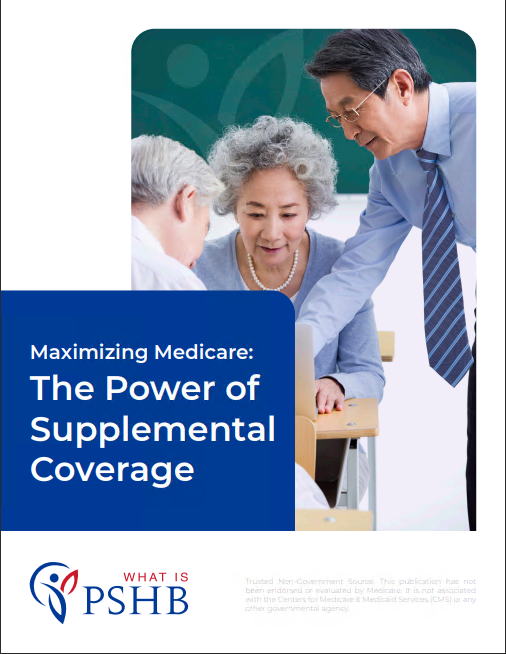Key Takeaways:
- USPS employees and retirees are facing significant healthcare changes starting in 2025, requiring careful consideration of new options.
- The Postal Service Health Benefits (PSHB) program will replace the current Federal Employees Health Benefits (FEHB) program, impacting healthcare decisions for over 600,000 postal workers.
Countdown to 2025: USPS Employees Are Facing Tough Decisions About Their Healthcare
As we inch closer to 2025, major changes are on the horizon for U.S. Postal Service (USPS) employees and retirees, particularly when it comes to healthcare. With the introduction of the Postal Service Health Benefits (PSHB) program, postal workers will have new healthcare decisions to make that could significantly impact their medical coverage and costs. Navigating these changes requires USPS employees to be well-informed about what lies ahead and to understand how the new program will affect them.
What Is the PSHB Program?
The PSHB program is set to replace the Federal Employees Health Benefits (FEHB) program for USPS workers starting in January 2025. Created under the Postal Service Reform Act of 2022, PSHB was designed specifically to address the unique healthcare needs of postal employees. This new program is exclusive to USPS employees, retirees, and their eligible family members, separating them from the broader pool of federal employees under the FEHB program.
The transition to the PSHB program is a significant shift. USPS employees will no longer be able to remain in the FEHB program, making it essential for them to thoroughly understand their new options. While PSHB is modeled after FEHB, there will be distinct differences in plan options, coverage networks, and potentially, the costs associated with these plans.
Why the Change?
The move to the PSHB program was driven by several factors, including the financial challenges facing the USPS and the need to streamline healthcare for its workers. USPS has been operating under significant financial strain for years, partly due to its obligation to pre-fund retiree health benefits. The PSHB program aims to reduce the burden on the Postal Service while still providing comprehensive healthcare to its employees and retirees.
Another key motivation for the change is to ensure that USPS workers who are also eligible for Medicare take advantage of that coverage. Under the new system, many retirees will be required to enroll in Medicare Part B to complement their PSHB coverage. This is a major shift for postal retirees who may not have previously enrolled in Medicare.
How Will This Affect Current Employees?
For current USPS employees, the shift to PSHB means reviewing their healthcare options in detail. While the new program is expected to offer similar types of coverage to FEHB, it’s essential to examine the specifics, such as:
-
Network Coverage: Will your current healthcare providers still be covered under your new PSHB plan? Ensure your doctors, specialists, and hospitals are part of the PSHB network.
-
Prescription Drug Coverage: How will your medication needs be covered under PSHB? Some plans may offer different formularies or coverage tiers for prescription drugs.
-
Costs: Although plan premiums or specific costs cannot be discussed here, it’s important for USPS employees to be aware of potential changes in their out-of-pocket expenses, such as copays, deductibles, and other cost-sharing elements. Reviewing each plan’s benefits in detail will be crucial for making informed decisions.
Implications for Retirees
For USPS retirees, the move to the PSHB program comes with some additional considerations. One of the most significant changes is the Medicare integration requirement. Starting in 2025, many postal retirees who are eligible for Medicare will need to enroll in Medicare Part B to maintain their PSHB coverage. This is a departure from the current system under FEHB, where some retirees may have opted out of Medicare Part B due to its additional costs.
Retirees will need to weigh the benefits of enrolling in Medicare Part B against the additional costs it may incur. However, the integration of Medicare with PSHB plans could potentially offer more comprehensive coverage, as Medicare would serve as the primary payer, with the PSHB plan covering additional services. It’s essential for retirees to carefully review their healthcare needs and financial situation to determine the best course of action.
Navigating the Decision-Making Process
Given the complexity of the changes coming in 2025, USPS employees and retirees should begin planning now. Here are some practical tips to help guide you through the decision-making process:
-
Attend Informational Sessions: USPS and insurance providers will likely offer webinars, informational meetings, and other resources to help you understand your new healthcare options. Take advantage of these opportunities to ask questions and clarify any concerns you may have.
-
Consult with Licensed Insurance Agents: Navigating the complexities of healthcare can be challenging, especially with new programs like PSHB. Consulting with licensed insurance agents can help you compare different plans, understand how Medicare fits into your coverage, and make informed decisions based on your individual needs.
-
Review Your Current Healthcare Needs: Take the time to assess your healthcare usage over the past few years. Consider factors such as prescription medications, doctor visits, and any specialized care you require. This can help you identify which PSHB plan will best meet your needs.
-
Prepare for Medicare Enrollment: If you’re a retiree nearing Medicare eligibility, now is the time to start preparing for Medicare enrollment. Make sure you understand how Medicare Part A and Part B work in conjunction with your PSHB plan, and be mindful of any deadlines to avoid late enrollment penalties.
-
Stay Informed: As the January 2025 deadline approaches, USPS will continue to release more information about the PSHB program and its specific plan options. Stay up to date with the latest announcements to ensure you’re making decisions based on the most current information.
What Happens If You Don’t Act?
Failing to review and select a new PSHB plan could result in gaps in your healthcare coverage. For retirees, not enrolling in Medicare Part B could lead to higher out-of-pocket costs, as your PSHB plan would not coordinate with Medicare. Additionally, those who miss key deadlines for enrolling in Medicare or choosing a PSHB plan may face penalties or delays in receiving healthcare benefits.
Being proactive is the best way to ensure that your healthcare needs are met without unnecessary interruptions. Start gathering the necessary information now so that you can make timely, well-informed decisions.
What Can You Do to Prepare for 2025?
Preparation is key when facing major healthcare changes. As 2025 draws near, there are several steps USPS employees and retirees can take to ensure a smooth transition to the PSHB program:
-
Explore All Available Plans: Begin by familiarizing yourself with the different plans that will be offered under the PSHB program. Look at the benefits, coverage networks, and costs to determine which options best fit your healthcare needs.
-
Understand the Medicare Requirements: For retirees, the Medicare Part B requirement is a significant change. Make sure you understand how Medicare will work with your PSHB plan and budget accordingly for any additional costs.
-
Check Eligibility for Premium Support: Although specific financial details are not provided, some retirees may be eligible for premium support under certain circumstances. It’s important to check with the appropriate agencies to see if you qualify.
-
Keep Track of Important Dates: Missing enrollment deadlines could lead to penalties or loss of coverage. Mark your calendar with important dates for enrolling in Medicare and selecting a PSHB plan to avoid any gaps in coverage.
The Importance of Making an Informed Decision
USPS employees and retirees face some of the most significant healthcare decisions in recent history. With the introduction of the PSHB program, it’s vital to understand how the new system will work and how it integrates with Medicare for retirees. Choosing the right plan under the PSHB program requires careful consideration of your healthcare needs, costs, and provider networks.
By taking the time to educate yourself about the PSHB program, exploring all available options, and preparing for Medicare enrollment if applicable, USPS workers and retirees can make informed choices that will ensure their healthcare needs are met in 2025 and beyond.
Stay Ahead of the Change
The healthcare landscape for USPS employees and retirees is changing rapidly, and it’s crucial to stay informed. Start reviewing your options now, consult with experts, and make sure you’re fully prepared for the switch to the PSHB program. By staying proactive, you can avoid coverage gaps and ensure you’re selecting the best possible healthcare plan for your needs.






